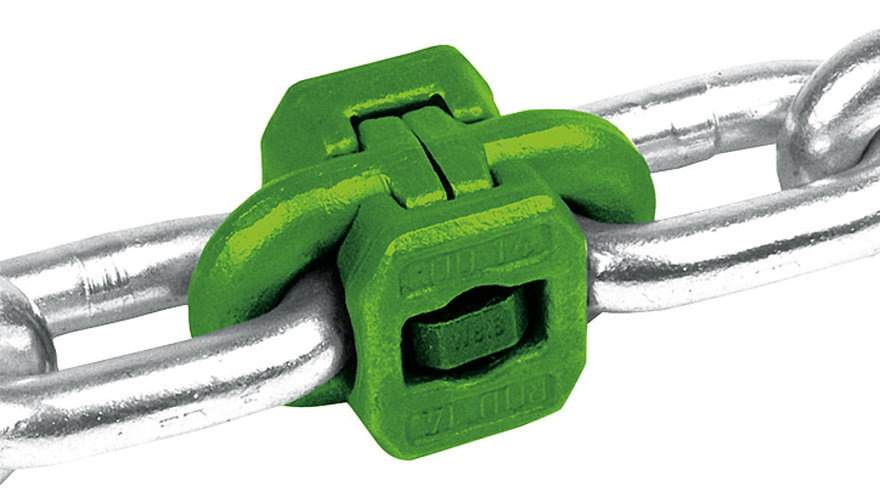Elegant Design & Engineering: The UKS Universal Chain Connector
Manufacturer RUD solves industrial-strength problems
As industrial designers, we've designed things that have rolled off of assembly lines. But something few of us think about are the actual conveyor belts.
Medium- and heavy-duty conveyor belts are driven by what the industry calls round chains, as opposed to bicycle-like roller chains. These round chains are beefy and strong.

Because the chain cannot be made with the links in a closed loop—it would be impossible to install or remove for maintenance--one of the links in the chain is a special removable one called, simply enough, a chain connector.
These chain connectors have to be designed for their specific application (see examples below). Their shapes can differ depending on whether they're run vertically or horizontally, and whether they're driven by sprocket vs. pocket wheels. (A pocket wheel is used in applications where it's undesirable to have the chain exposed as it goes over the sprocket, hence the links are "pocketed" inside the wheel and protected on the sides.)
 Example of a pocket wheel
Example of a pocket wheel
 This type of chain connector can run over a sprocket, but not a pocket wheel.
This type of chain connector can run over a sprocket, but not a pocket wheel.
 It must be attached by a nut and bolt, with the nut set to a specific torque requirement.
It must be attached by a nut and bolt, with the nut set to a specific torque requirement.
 This type of chain connector is designed to run over a sprocket wheel, or a pocket wheel only if the chain is running vertically.
This type of chain connector is designed to run over a sprocket wheel, or a pocket wheel only if the chain is running vertically.
 It must be attached with a hex driver and set to a specific torque.
It must be attached with a hex driver and set to a specific torque.
German company RUD, a manufacturer of conveyor belt hardware, has designed a universal chain connector that removes some of the hassles of the previously-described types. Their UKS model can be used in both vertical and horizontal applications, and does not require a torque-measuring device to install.
 The Universal UKS Chain Connector
The Universal UKS Chain Connector
To install it, the operator first removes the locking pin from the two halves of the shackle using a hex wrench:

The halves of the shackle are looped through and hooked up:


The locking pin is then inserted, such that the cams on it (1) do not interfere with the flange-like flights (2) on the shackles:

Once the pin is inserted, it's then rotated 90 degrees with the hex wrench:

Once the pin is turned 90 degrees the cams are locked in place, and the operator can feel that the pin cannot rotate any further. There's no need to carry a torque wrench and check the setting, you just turn the pin until you feel it stop.

With the UKS universal connector, RUD reckons, companies will not have to stock and keep track of different sorts of connectors, and maintenance is made fast and easy. It's a nice piece of design and engineering that few people will ever see or appreciate.

-
o5Favorite This
-
QComment
K
{Welcome
Create a Core77 Account
Already have an account? Sign In
By creating a Core77 account you confirm that you accept the Terms of Use
K
Reset Password
Please enter your email and we will send an email to reset your password.

